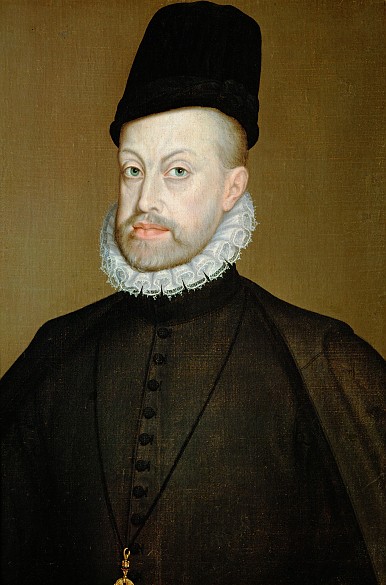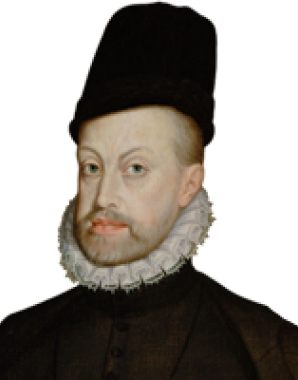Philip II: old age and death
Philip’s life was dominated by the urgent concern of his succession. The tragic fate of his first son Don Carlos and the unpromising development of his heir, Philip, (later Philip III) very nearly led to the Spanish dynasty dying out at the height of its power.
Philip took refuge in extreme religiosity, turning away from the world and its pleasures and finding solace in work. He developed a constant mistrust of those around him, and made sure they felt his power: Philip was a master of intrigue, and no one could be wholly sure of his favour. He discarded favourites in an instant and was merciless and cruel in his punishment not only of individuals but also entire cities and regions which were to be made to repent their resistance to his royal authority.
The failure of his policies was, however, unmistakeable: the Netherlands were in open rebellion against Spain, and despite a vigorous response and enormous bloodshed he lost control of the provinces. Even in Spain itself decline began, accompanied by local revolts and an economic crisis. It was becoming clear that the country was exhausted, and it would undergo a slow decline in the seventeenth century.
This was accompanied by foreign defeats, including the spectacular sinking of the Armada off the coast of Britain in 1588. When news of this arrived, Philip reacted soberly, saying: ‘I sent my fleet against men, not against the wind and the waves!’
Philip’s resignation was reinforced by his physical decline. The king suffered from gout and bouts of fever caused by malaria. For the last three years of his life he was strapped into a specially constructed chair that kept him almost motionless. He died at the age of seventy-one in the Escorial, where he is also buried, in the Pantheon, the mausoleum of the Spanish kings in the crypt of the palace church.













